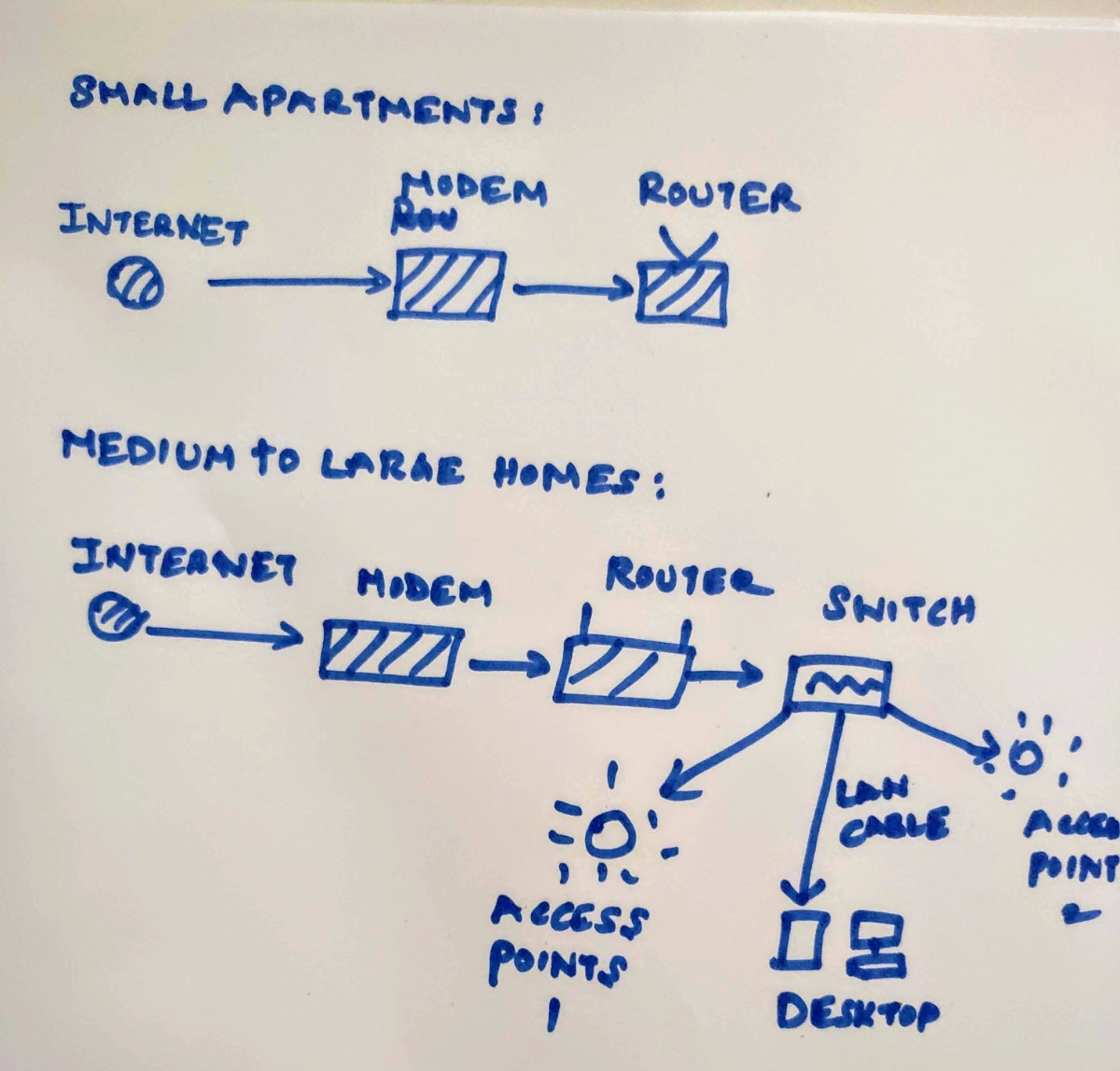How to set up a Home Network
Our Home is our castle and unknowingly we all own and run a private network called LAN (Local area network), With the growing popularity of the smart home and connected devices, its more compelling now to understand the home networking![]()
This article goes over everything needed to strengthen your home Wi-Fi, enhance its security, and get rid of the dreaded “buffering” symbol from your Netflix forever.
Understanding Networking gear - Modem, Routers, Switch, Ethernet cables, Access points
The very first step to supercharging your home network is to understand the hardware that makes it “work”:
- Modem: Modem = Modulator + Demodulator. The Modem connects ISP network to your home, translating analog data to digital.
- Router: What is often referred to as a "router" in home networking is not just a router, but also a network switch and (usually) a wireless access point. A Router routes the data to the appropriate system. Usually most routers are wireless (Has inbuilt Access Point) and create a wireless network for the end devices
- Wireless Access Point (AP): The AP's extends the wifi network. They connect to a router and creates a wireless network for the end devices.
- Ethernet cables: cables that transfer data between devices. They’re the cheapest, fastest way to connect devices to the internet.
- Switch: box that turns one ethernet connection into several, allowing multiple wired devices to connect to the internet without overloading the router
WAN vs LAN - the Network flow:
- LAN ( Local Area Network): The network of devices inside your own home. The devices inside your LAN is not visible to the people outside your home. Each device gets a local IP address assigned by the DHCP server (router). Type "ipconfig" in the windows run dialog to get the LAN IP address, it usually starts like 192.168.x.x
- WAN ( Wide Area Network): WAN is the WWW (World wide web). Each home gets a unique WAN IP address assigned by your internet company. Open up a browser and visit whatsmyip to find your WAN / public IP address
What do I need?
- Small apartments: If you live in a small to medium sized apartments (< 1000 sqft), as I do. all you need is a modem hooked up to a decent router. This setup is all you will never need and you will have good coverage throughout the apartment
- Single-family homes / large apartments: If you live in a big house, you may have a modem hooked up to a router which in turn connects to a switch / wireless access points

What's the best device for my gaming/streaming rig?
A wire. Always and forever. The router portion of your router will handle your gigabit service just fine. Your lag is going to happen because of airtime problems on wifi more than anything else. So any device that has a network port in it, gets a cable.
Wireless Router Location
Because the Wireless Router provides the Wireless access point, they should be placed in a central location, if possible, to get the best wireless reception. Don’t Hide it in a cupboard, Install it behind the sofa, or install next to motors, microwaves or cordless telephones.
Having a good understanding of how your network fits together, and works are essential for successful troubleshooting. Hope this gets you a good start with your home networking!
wifibeans
posted onEnjoy great content like this and a lot more !
Signup for a free account to write a post / comment / upvote posts. Its simple and takes less than 5 seconds